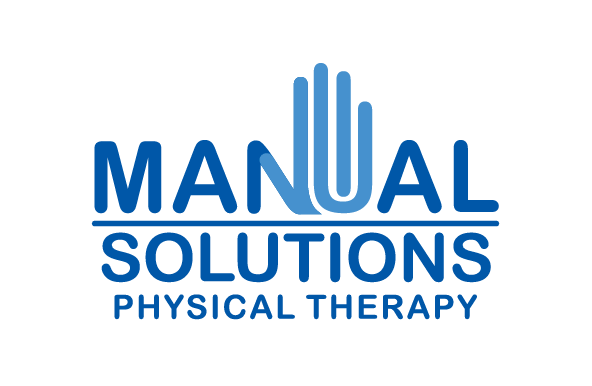Injuries We Treat
Don’t let pain rule your life; set an appointment today to meet with one of our physical therapists for the one-on-one care you need and deserve.
We treat Back and pelvic problems, “Sciatic pain”, Neck pain, Shoulder pain, Scoliosis, Hip knee and ankle pain, Bursitis, tendonitis ( the “ities”), Headaches, TMJ Dysfunction, Plantar fasciitis, post surgical rehab, balance, elbow and hand dysfunction, cranial dysfunctions including concussion, visceral (organ) dysfunctions, vertigo and rib cage dysfunction. Learn about our the many diagnosis we treat and our unique treatment techniques.
Back and pelvic problems
When treating back pain, it is important to know the specific source of the pain…
Post-Surgical Rehabilitation
Not all surgical rehab is the same. In addition to surgeon prescribed protocols we coordinate muscle contractions in the core and surgical area, the alignsurrounding joints and release the scar tissue.
“Sciatic” Pain
Many patients arrive at our office with a pain in their buttock and down their leg…
Neck Pain
Cervical spine pain is typically caused by compression of the disc or small joints on the side called facets. The pressure on these structures is often relieved by aligning the bones and reinstating motion and muscular control at each level…
Shoulder Pain
When treating the shoulder, it is very important to screen the neck for nerve irritation. To the person experiencing the pain, nerve and shoulder pain can feel exactly the same but a 30 second screen can focus treatment and let you know if the pain originates at the shoulder…
Scoliosis
The most common problem in the mid back and rib cage is scoliosis. There are two main categories of scoliosis. The first category is for patients with a genetic condition in which the bones are the wrong shape. The second category is compensatory scoliosis meaning that the body creates a sideways shift to balance the body in response to a problem somewhere else in the system. Correcting scoliosis is like untying a knot…
Hip, Knee, and Ankle Pain
Most chronic hip, knee and ankle problems are a result of poor alignment and muscular control. When the joints of your lower body aren’t properly stacked and smoothly controlled, they pinch together or wear down…
Bursitis, Tendonitis, Arthritis, (the -itises”)
When patients report that they have bursitis, tendonitis, arthritis or any other “itis” the question that needs to be answered is “why?”. The suffix “itis” indicates inflammation, so the terms accurately tell us that the bursa, tendon or joint is sore and inflamed but is the inflammation due to increased mechanical friction, trauma, or a disease process…
Headaches
Headaches can be very complicated and come from a variety of sources, we have divided the most common headaches into two categories. 1) Upper cervical headaches 2) Tension headaches…
TMJ Dysfunction
TMJ pain can be very complex because treatment involves creating a stable base of support in the neck, mobilizing cranial bones and balancing the strength and mobility of the jaw from side to side. We have specialized techniques to improve tongue placement, muscle relaxation and symmetry…
Plantar Fasciitis
Plantar fasciitis develops when a person has a tight calf and a rigid foot. Manual Therapy allows us to quickly restore calf mobility by freeing fascial tissue and move the bones of the feet. We often hear that patients are told that the bones of the feet cannot be moved. We change foot shape and mobility every day…
Balance Dysfunction
Balance keeps us safe. Falls cause injury and may even limit our ability to take care of ourselves. Balance requires muscular strength and an efficient nervous system.
Elbow Wrist Hand Dysfunction
A healthy arm starts with a stable upper back and shoulder. We commonly find elbow wrist and hand problems that start with a nerve in the neck or a scoliosis in the back. It is important to evaluate these areas and treat the body as a whole.
Concussions and Cranial Problems
Our Manual Therapy Skills allow us to decompress the sutures of the skull and restore the small movements that are necessary to be healthy. The most common changes reported by patients are a sense of decreased pressure, improved sinus drainage or headache relieve. We also use these techniques as part of treatments for TMJ dysfunction, cranial nerves issues and with swallowing or breathing problems…
Organ Restrictions (Visceral)
At Manual Solutions Physical Therapy, we treat commonly overlooked mechanical issues associated with the organs. Organs are large and often heavy structures that move with the rest of the body. If the organs get “stuck” and can’t slide in relation to one another or surrounding muscles and bones the result is stiffness, pain and compensation…
Dizziness and Vertigo
There are many possible causes for dizziness and vertigo. For a complete assessment, therapists need to complete a detailed assessment addressing problems with the cranium, cervical spine, inner ear, cranial nerves and eyes. Once the problem is identified the therapist needs to have the skills to treat all of these areas…
Rib Cage (Ribs that are out)
When patients report that they have a rib that is “out” they are usually in a great deal of pain. A rib that is “out” is usually a rib that is stuck in a twisted position that puts pressure on sensitive nerves and ligaments…


















